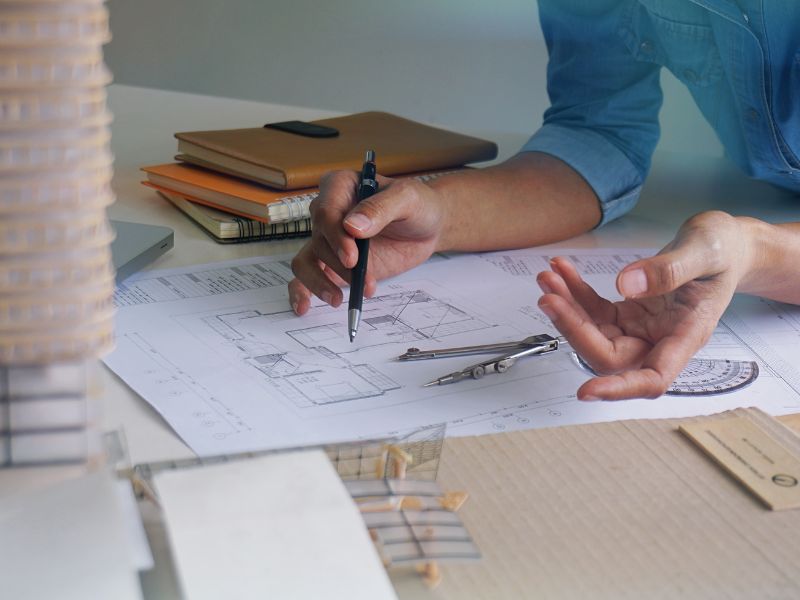As productivity-inspiring work and leisure spaces need to be created there is growing appreciation of well-designed office and home interiors.
One of the glamorous and exciting professions which has come of age in India is interior design — a latter day career option which is attracting many creative youngsters. As more productivity-inspiring work spaces need to be created with the expansion of corporate activity, there is growing appreciation of appropriately designed office (and home) interiors, malls, hotels, and standalone designer stores.
Striking and inspiring interior designs are specially important in some professions: in an architects office, a design consultants firm, hotel, shipping and airline companies, and departmental stores. A working knowledge of architecture is required to know how to divert drains and plan electrical circuits, ventilation points, heating systems etc. Therefore, a growing number of interior designers are also qualified architects.
Professional training in interior design can commence after completion of the Plus Two or equivalent examination. Admission is on the basis of aptitude tests which evaluate artistic sensibility, technical drawing skills, spatial apperception, sense of colour, attention to detail, and idea of proportions.
Various polytechnics across the country offer interior design programmes. The duration of such diploma and certificate courses varies from two to three years. At the School of Interior Design, Centre for Environmental Planning and Technology (CEPT), Kasturbhai Lalbhai Campus, University Road, Ahmedabad, a five-year professional programme in interior design is offered to students who have completed Plus Two or equivalent examination in the science stream securing at least 60 percent aggregate in class X and 50 percent aggregate in class XII examinations. This programme is a blend of artistic and technical subjects; at the same time it provides sufficient scope for linking study with actual workplace conditions.
Other reputed institutes offering degree courses in interior design are:
Sir J.J. School of Arts, Mumbai, offering its four-year bachelor of fine arts (BFA) programme with specialisation in interior design
National Institute of Design, Ahmedabad
School of Planning and Architecture, New Delhi
School of Interior Design, Bangalore
School of Interior Design, Vallabh Vidyanagar
Shree Devi College of Interior Design, Bangalore
Creations — The School of Design & Technology, Pune
College of Arts and Design, Chennai
SNDT Womens University, Mumbai
Apeejay Institute of Design, New Delhi
Birla Institute of Liberal Arts and Management Sciences, Kolkata
Interior designers are in great demand following the great Indian retail boom and surging economic growth. Theres a huge dearth of these professionals and with interior design being one of the fastest growing professional vocations, there are lots of opportunities for them. They can start their own firms by taking up projects, work as designers for malls, hotels, design companies, and architectural firms. The sky is the limit as far as financial rewards are concerned.
The demand for interior designers is on the up and will continue to increase but a line has to be drawn between professionals and non-professionals in this field,” says Mumbai-based Kavita Kapoor, an internationally-acclaimed interior designer whose name figures in the international Who’s Who and who has won innumerable awards in design.
Interior design is an investment in real estate. It does not necessarily have to be lavish. Planning to utilise every corner and aspect of a house or area is a very important factor. Some people may buy beautiful pieces of furniture or artefacts which dont jell with each other or in totality project an inappropriate image or atmosphere. The challenge in interior design is to stretch a budget by cutting waste,” explains Kapoor.
And Kapoor should know as she has had 40 years of experience as an interior designer. A fine arts graduate of Mumbai’s well-known Sir J.J. School of Art, she joined the creative department of ad agency, J. Walter Thompson in 1958 after graduation. After her marriage to an Indian Air Force (IAF) officer in 1959, Kapoors early years were spent in designing IAF messes on low budgets and experimenting with new concepts. In 1967, she became a fully-fledged professional designer and in 1975, after her husbands death she joined Air India as chief designer and set up a new department for the airline. To her credit are the well-designed Air India booking offices in London, Nairobi, New Delhi, and Hyderabad. As Air Indias designer, one of her most challenging, interesting and prestigious assignments was to redesign Goas Dabolim Airport for the Commonwealth Heads of Government Meet (CHOGM).
CREATIVE PURSUIT. Apart from designing Air Indias offices, Kapoor also designed late prime minister Indira Gandhis offices in Delhi and the interior of her aircraft and the homes and/or offices of several film stars, VIP areas of the INS Vikrant, and the offices of Hinduja House in Mumbai. I try to synthesise Indian and western designs. Its practical to use the technology of the West and blend it with our culture. I would like to do relatively less work and maintain quality to ensure that the originality and creative aspects can be safeguarded,” says Kapoor.
After a 13-year stint with Air India, Kapoor started her own consultancy firm, The Design Centre, which she runs with the help of her architect daughter. Currently shes designing interiors of bungalows in Lonavla and a couple of big offices” in Mumbai. A fine artist, Kapoor concentrates on her painting too and has several exhibitions to her credit.
Interior design is a fulfilling career for those with an artistic bent of mind. With awareness of the need for appropriate interior design growing, the opportunities will only increase in this well-remunerated profession,” sums up Kapoor.
